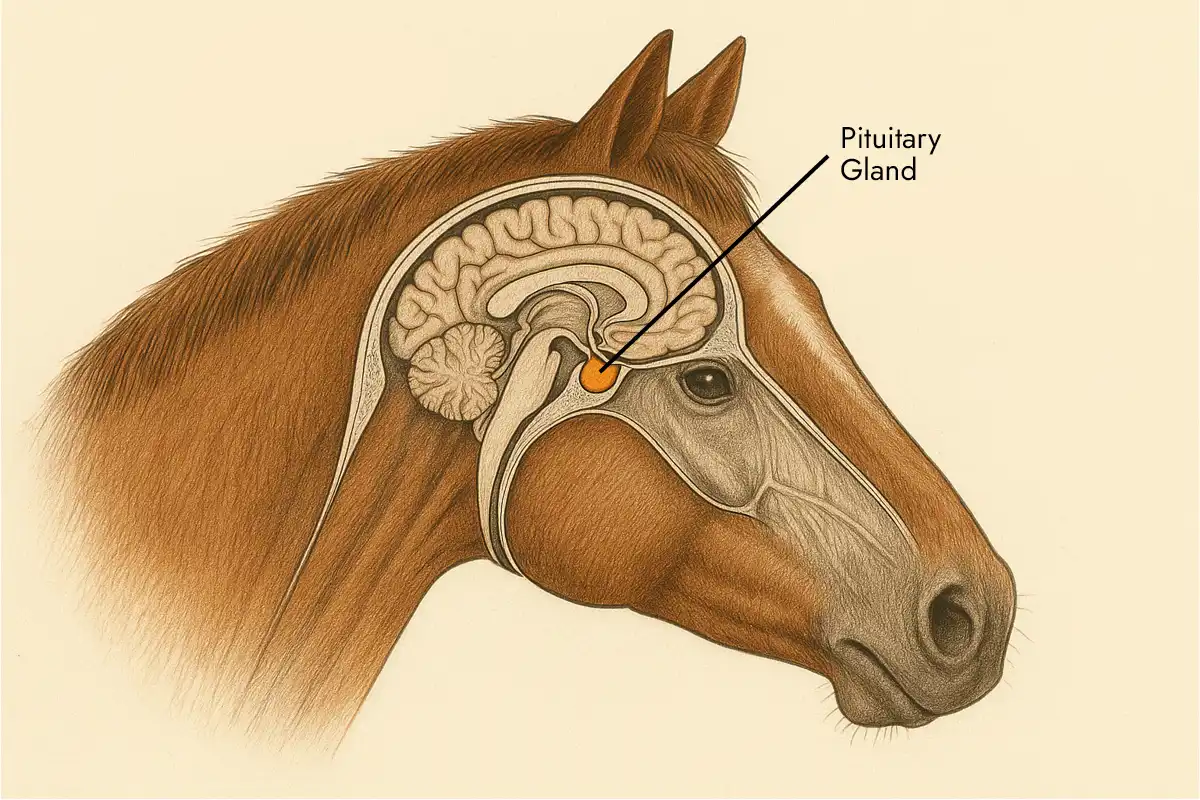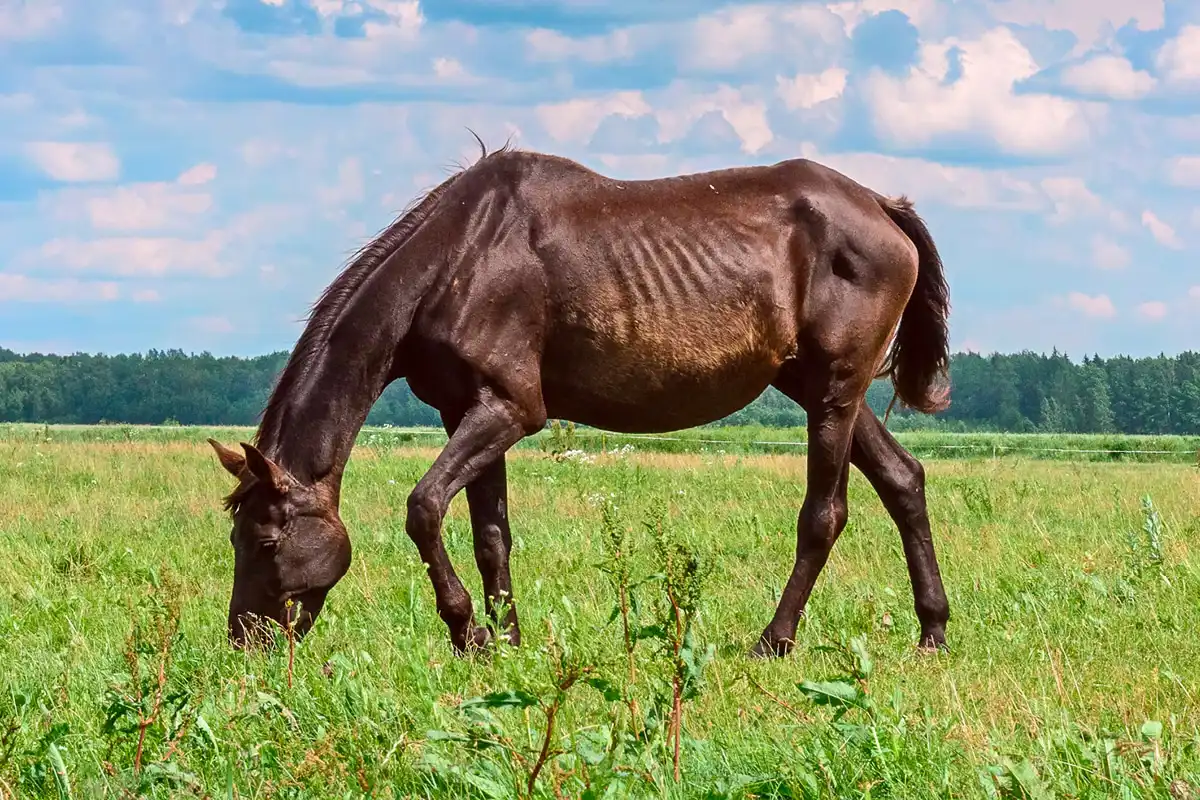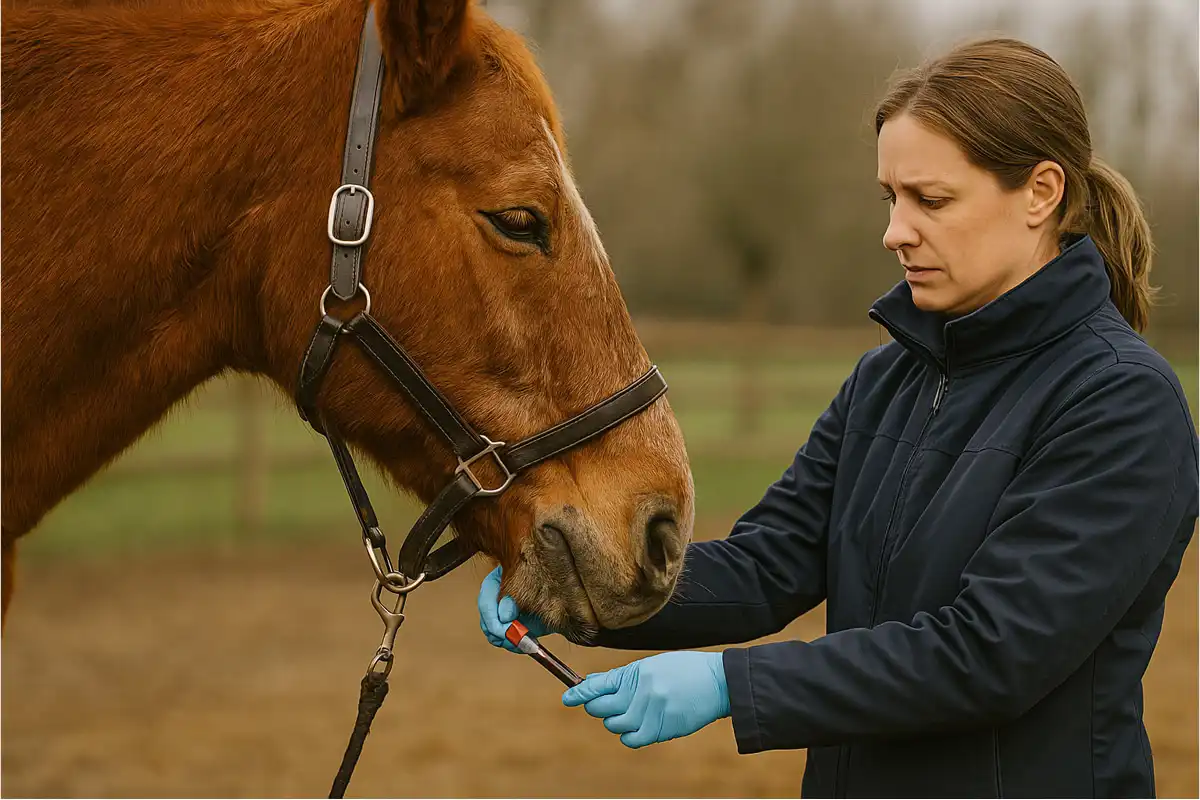PPID (Cushing) in Horses: Causes, Symptoms, Diagnosis and Treatment
A long, often curly coat, difficulty shedding, changes in behaviour and muscle loss – these are typical signs of Equine Cushing’s Syndrome (ECS), also known as PPID (Pituitary Pars Intermedia Dysfunction). This condition mainly affects horses aged 15 and older but can also develop earlier. It is the most common hormonal disorder in horses.
What is PPID/Cushing?
In Cushing’s syndrome, the pars intermedia of the pituitary gland is affected. Due to age-related dopamine deficiency, the production of ACTH (adrenocorticotropic hormone) is no longer properly regulated. This leads to an overproduction of ACTH and a hormonal imbalance that disrupts various metabolic processes.
The disease is chronic and progressive but can be managed effectively. Early diagnosis can prevent secondary issues such as laminitis, infections, or insulin resistance.
How common is Cushing in horses?
Studies have shown that 20–30% of horses over the age of 15 are affected. Many owners do not recognise the signs or attribute them to “old age”. However, even younger horses (as early as 7 years old) may develop early signs of the disease.
Causes
The exact cause of PPID is still unclear. It is believed to result from a combination of genetic predisposition, lack of exercise, stress, and overfeeding (especially with sugar- and starch-rich feeds). PPID does not occur in wild horses, which suggests that modern management conditions play a role.
Typical symptoms
Symptoms vary greatly and often develop slowly. The most common include:
- Long, curly coat / abnormal shedding
- Laminitis (often with no clear cause)
- Insulin resistance
- Lethargy, reduced performance
- Muscle loss, especially along the topline
- Excessive sweating
- Increased thirst and urination
- Frequent infections, slow wound healing
- Infertility
- Fat deposits above the eyes, large abdomen
In early stages, symptoms are often subtle. Differentiating PPID from other diseases like Equine Metabolic Syndrome (EMS) is essential and should be done by a veterinarian.
Diagnosis
Diagnosis is based on a blood test carried out by a vet. ACTH levels are measured and interpreted depending on the season:
- November to July: < 29 pg/ml
- August to October: < 47 pg/ml
Significantly elevated values often indicate PPID. The best time for testing is between August and October when the difference between healthy and affected horses is most evident.
Picogram (pg)
A picogram is a unit of mass in the metric system.
1 picogram (pg) = 0.000000000001 grams (10?¹² g) — that is, one trillionth of a gram.
It is often used in laboratory diagnostics to measure extremely small concentrations of substances in blood or tissues, such as hormones like ACTH in horses suspected of having PPID (Cushing’s disease).
Treatment
While PPID cannot be cured, it can be managed well with medication. The aim is to regulate hormone production in the pituitary gland and alleviate symptoms. Improvement is often seen within a few weeks. Lifelong treatment is necessary and should be monitored by a vet.
What else can you do?
In addition to medication, these supportive measures help your horse stay healthy:
- Feed a low-sugar and low-starch diet
- Limit grazing when grass fructan levels are high
- Use high-quality, grain-free mineral supplements
- Regular hoof and dental care
- Adjust exercise to energy levels
- Avoid stress
- Maintain hygiene and treat wounds carefully
Conclusion
PPID is an age-related but treatable disease. With proper veterinary care, nutrition and management, your horse can live a long, healthy and active life despite the diagnosis.






